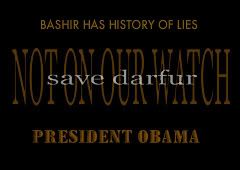WHAT WILL MATTER WHEN WE DIE?
In my opinion the only thing that will matter when we are dying or have died is ~ HOW we have treated one another while here...not the messy house, not the weeds in the flower beds, not the condensation between my double-paned windows, not the chore "to do" list, that eats into my time of doing what I really want to do.
..................................................
..................................................
Source of the following: www.iactivism.org

The World
Source: www.iactivism.org/learn/the-world
Conflict Displaced Population: 43 million
If they were a nation, the people that have been displaced by violence and conflict around the world would have a population larger than 85% of the countries around the world.
This population, after having more than likely experienced abuse and the loss of family, friends, and home are then exposed to more violence and abuse–as well as the ravages of hunger, disease, and natural forces–while living in areas that do not have the resources or access to support them.
Refugees, the displaced that have crossed an international border, are eligible to protection and assistance under international agreements and law, but the internally displaced do not officially enjoy that protection. They are at the mercy of the local government, and state sovereignty has ofter trumped the protection of citizens–who are often the victims of their own government.

Sudan Region
Conflict Displaced Population: Over 5 Million
For over 40 years, Sudan has been a main producer of conflict displaced populations. The current numbers are staggering. In Darfur, some 2.7 million internally displaced persons (IDPs) and over 270,000 as refugees on the Chad border. The capital, Khartoum, is “home” to approximately 30,000 urban refugees, and Khartoum State has a population of 1.7 million IDPs, with most living in unofficial squatter areas and with little to no assistance. After two decades of civil war with the North, the South has seen a return of refugees from surrounding countries over the last five years, but instability, tension, and occasional violence continue to contribute to a population living at grave risk.
In January, 2011 the South is scheduled to vote on a referendum that will decide whether it separates from the North. This could mean the birth of a new nation, but there is also the possibility of renewed civil war, which could result in millions of displaced people.

The Chad Camps
Population: 270,000
There are twelve Darfuri refugee camps in eastern Chad, located up and down the border with Darfur, Sudan. Refugees fleeing the destruction of their villages started arriving at the border in 2003, most of them walking days across unforgiving terrain. The United Nations Refugee Agency (UNHCR) deployed to the region, providing life saving aid and eventually setting up what was supposed to be temporary camps.
People from different tribes and from all areas of Darfur continued to pour in to Chad, fleeing to the closest border point, creating the necessity for the twelve camps that now exists. The greater bulk of the population comes from three main tribes: the Fur, the Masalit, and the Zaghawa. There are more than a dozen other smaller tribes represented in the camps.
UNHCR coordinates all activities in the camps, distributing the assistance responsibilities among different non-governmental organizations (NGOs), all partnering and with permission from the Chad government to provide as safe and as healthy an environment as possible. UNHCR depends on donations from nations, groups, and individuals to carry out its mission.

Sketches of Life
We were given these beautiful color pencil drawings yesterday during our tour of the only secondary school in camp Djabal. The artist told us of his long and dangerous journey to the camp Djabal. For me, his pieces speak of one man’s curiosity and fascination with life. He told us that the large tree in one of the drawings was of the same kind under which Darfuris meet to discuss village matters. These trees hold a sacred place in Darfuri culture and they hope to one day return to them. View Pictures


Communicate to the President
that he has a role to play
1-800-GENOCIDE
1-202-456-1111
www.whitehouse.gov/contact
Won't you use your voice?
Darfuris have been put on the back burner by our President
and many other leaders on the planet
and
Sudanese President Omar al-Bashir
has put them on the front burner.
Labels: A GOOD NIGHT IN SUDAN, ACT NOW FOR DARFUR, Camp Djabal, Do Unto Others As You Would Have Them Do Unto You, Golden Rule, I-ACT, Omar al-Bashir, President Barack Obama, Sandra Hammel ilovemylife



0 Comments:
Post a Comment
Subscribe to Post Comments [Atom]
<< Home